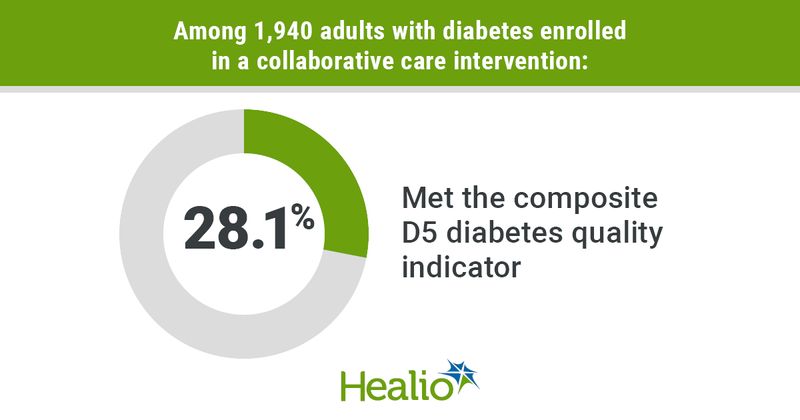Collaborative model improves diabetes management in primary care
A model that utilizes health care professionals from multiple specialties improved the physical well-being of adults with diabetes, researchers wrote.
“Too often our patients’ care was fragmented, opportunities to intervene and improve diabetes management were missed, and the system overall did not support the patients or the clinicians in managing this complicated disease,” Joseph R. Herges, PharmD, a clinical pharmacist at the Mayo Clinic in Minnesota, told Healio Primary Care.

The model, described in Annals of Family Medicine, was created and piloted at five practices in urban (n = 1), suburban (n = 3) and rural areas for 14 months. It relied on registered nurses (RNs) to engage with patients, clinicians, pharmacists and other health care workers to provide patient-centered, evidenced-based diabetes care.
At the time of implementation, the model was rolled out to 7,215 adults with diabetes, who were supported by 318 primary care clinicians (physicians, residents, nurse practitioners and physician assistants), 90 care team RNs and six pharmacists.
For the model:
- the health system created a guide to assist RNs with electronic health record documentation regarding diabetes;
- all RNs received a 4-hour education session on the guide;
- each RN was paired with a primary care clinician to ascertain which patients did not meet the composite D5 diabetes quality indicator (glycemic control, BP control, nonsmoking status, aspirin use for secondary prevention of ischemic vascular disease and indicated statin use);
- the RN discussed the patient’s treatment options with a pharmacist and, if needed, social determinants of health with a social worker and an appointment scheduler;
- a pharmacist evaluated the appropriateness, efficacy and safety of medications and the patient’s adherence to medications, as well as utilized the health system’s collaborative practice agreement, when necessary, to begin, change or stop the patient’s medications;
- the RN and primary care clinician finalized the patient’s care plan (if changes to a patient’s medication and/or an outside referral was made);
- the RN reached out to the patient when a new care plan was established for review and implementation; and
- the RN followed up with the patient until the D5 metrics were met, and discussed progress and any “challenging situations” during monthly meetings with the primary care clinician.
According to the paper, within 6 months of the model’s rollout, 26.9% of the 7,215 eligible patients were formally enrolled. Among them, 28.1% ultimately met all D5 metrics, increasing the health system’s composite D5 metric from 39.3% to 43.1% in the eligible patient population.
Most primary care clinicians welcomed the RN role and supported changes to improve the model, Herges and colleagues wrote. The RNs “appreciated the increased engagement and responsibility, but not the complexity of the intervention and added workload,” they added.
Herges said the nurses’ feedback provided an opportunity to fine-tune the model.

“More focus on setting the vision, identifying and addressing competing priorities would have been helpful,” he said. “There were also site-specific nuances that deserved more consideration, such as dedicated physical space, unique patient populations, varied clinician types and the need for ongoing reinforcement of the process after initial roll out, as well as the benefit that a staggered implementation rather than full-scale implementation may have had.”
Additional data, including how the program adapted to the demands of meeting COVID-19 guidelines, are forthcoming, Herges said.
